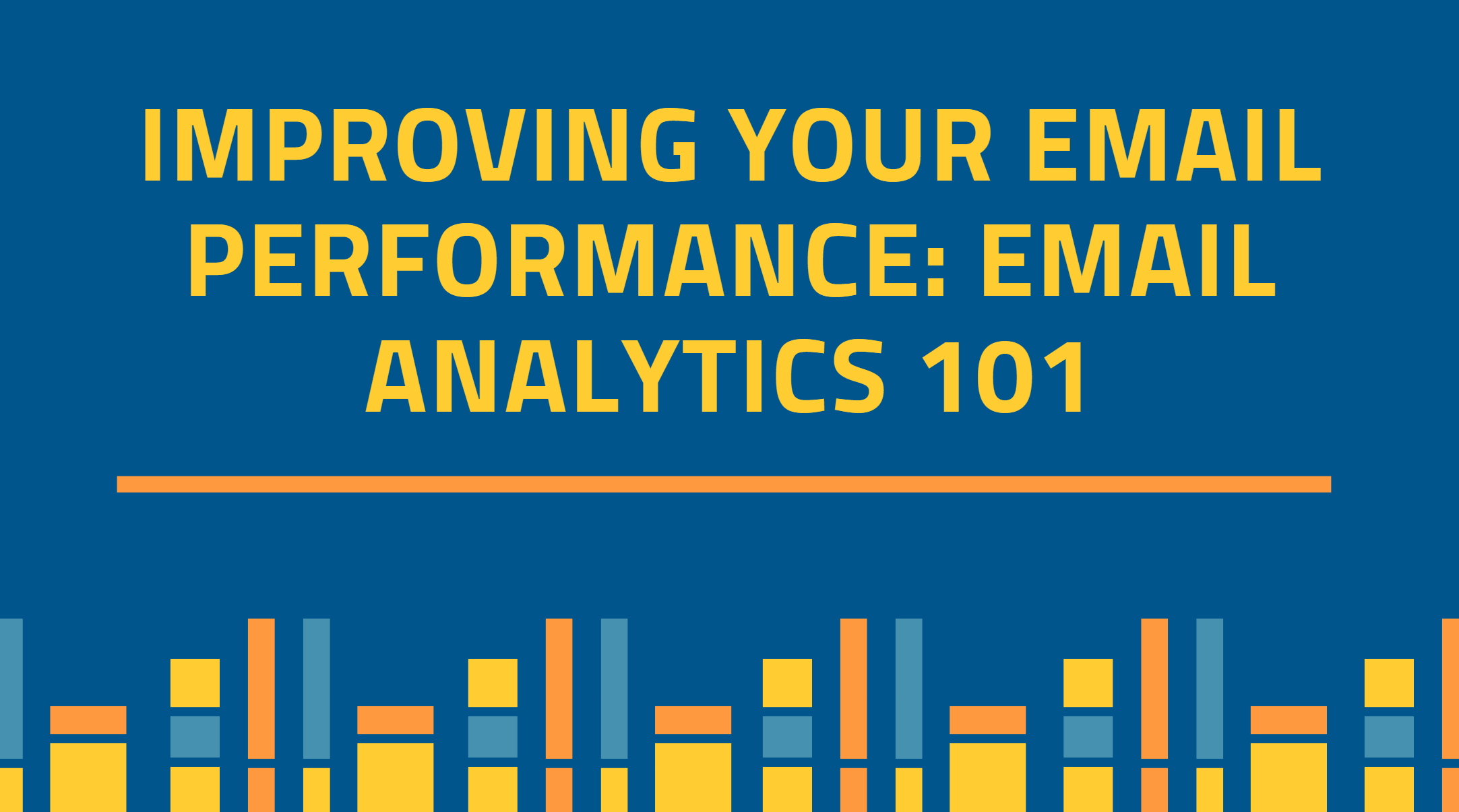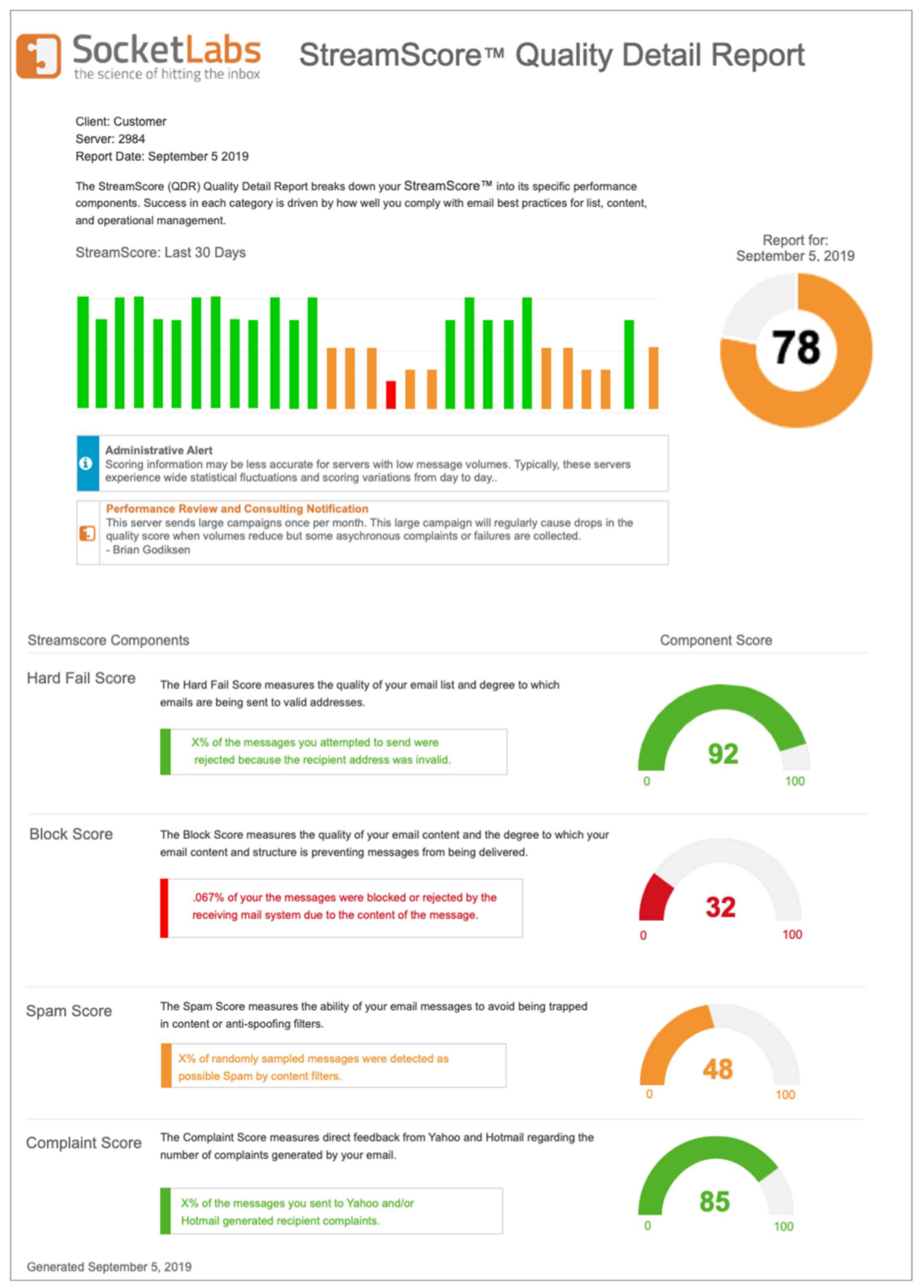
Years ago you may have seen articles announcing “The Death of Email!” as advances in new communication technology led to a movement to ditch the archaic communication method. Yet despite this quick sprint to move on to the next best thing and leave email behind, a visit today to those once-gloomy publications tell a story of persistent email growth. More people and businesses are using email than ever before. Yet despite this growth, it has become harder to drive engagement as new forms of communication compete for the same space. So why is email still growing? Why are more businesses using email than ever before? The answer is simple: email campaign analytics.
So, what is email analytics? Get ready, because we’re about to dive into just exactly what advanced email analytics are and how to use them to improve your email marketing campaign performance.
How Advanced Email Analytics Changed Email Marketing
For a while, email as a form of digital communication seemed to be nearing certain death. Between newer, faster forms of communication like text messaging and direct messaging, it almost seemed like email had become…outdated and therefore useless. But as technology advanced, in both email itself and the mediums in which we use email (cell phones, watches, earphones, laptops, tablets, etc.) the simple form of communication quickly became much more advanced and relevant in a digital economy.
With New Technology Came New Email Campaign Analytics & Marketing Metrics
New technology surrounding email allowed marketers, app developers, administrators and other key roles to use email as their most effective means of communication. Opens, clicks, complaints, unsubscribes, engagement, and other vital email campaign analytics became a new form of data that businesses are using every day to improve the way they reach and understand their audiences.
Without email, there would be no other secure way for businesses, applications, and E-commerce platforms to reach their stakeholders with important messages, through their personal mobile devices, arriving with a notification. Think about it, what other communication platform can a company like Nike use to send a completely unique, personal, designed, email receipt securely to a new customer, that arrives on their mobile phone within seconds, with a notification?
Email suddenly doesn’t seem so useless does it?
The Power of Email Analytics Software
While the sheer capabilities of email as an effective communication medium in the modern age are pretty remarkable, we have hardly touched on one of the most valuable assets that email has to offer: advanced email analytics. Email senders — from enterprises, to small application developers, to E-commerce platform administrators, to marketers — use email because its effective, AND because they can receive highly valuable email analytics reports.
Email senders have been using personal email analytics for years to better understand their audiences, maximize their communication capabilities, and most importantly maximize the return on their investments. Now, with advanced email analytics, senders get deeper insight into how their email is performing down to the moment they were opened, where the recipient clicked, and how effective the message was in accomplishing its goals. But how do senders actually reach these conclusions? Let’s explore some of the most common email analytics best practices and what they mean for high volume senders.
Advanced Email Analytics Best Practices: What To Measure
Delivered Messages
Delivered messages as an email marketing metric sounds pretty straight forward, but you may be surprised at the complexities involved. Senders usually think that email delivery simply happens, without fault, when you hit the send button. While this is certainly the desired outcome, an email is not considered successfully delivered until the sending server has received a 250 response code from the recipient server ensuring delivery.

Often, senders are shocked to find that there are tons of moving pieces that all must be perfectly aligned to successfully deliver high volume email. Starting with the actual email infrastructure itself, then considering the various mailbox provider rules and IP reputation management — there is a lot that could go wrong if you don’t know what you’re doing. To get a better understanding of how an email is actually delivered read our blog here, or to learn more about the different problems that occur within this delivery process, read our blog on SMTP error codes.
With advanced email analytics reporting, senders can get more information on what messages are not being delivered, and more importantly, why they aren’t being delivered. With this information, email senders can see how effective their email system is and what steps they need to take, if any, to improve their sending capabilities. If messages aren’t getting delivered as planned, email professionals, like those at SocketLabs, who have years of experience, will be able to analyze your data and easily diagnose any problems.
Opens and Clicks
Two important email marketing metrics to understand are opens and clicks. Opens are the amount of people who open your message, and clicks are the amount of recipients who click the links within your email. Obviously the higher your opens and clicks are, the better your email is performing.
The performance of your opens and clicks are a very good indicator of how your email is being interacted upon by your recipients. A poorly written subject line, bland and unrecognizable design, low quality email lists, and poor button placement are the most common causes of low opens and clicks.

Using an email analytics report to measure opens and clicks can certainly point you in the right direction in terms of email design and copy. If you want to learn more about how to increase your opens and clicks, we’ve already covered the topic in a blog just for you!
Spam Complaints
Tracking your complaints is the quickest and easiest way to tell right away if your lists are poor quality and if your email content needs work. The lower the complaint rate, the better, meaning people are genuinely interested in the value your email provides.
The more relevant and organically sourced your email lists are, the better your email will perform and the better your deliverability will be. Email lists that perform the best are opt-in lists that are composed of people who actually want to receive your email. Sending to a purchased list will be the first reason your complaint rates are high.
If your lists are clean and you are still seeing high complaints, your next focus should be the quality of content and your delivery strategy. To learn more about producing content that is optimized for success, read our blog on what affects email delivery here.
Hard Bounces
Offering even more raw feedback on the quality of your email list is the hard bounce metric. A hard bounce is an email that has been permanently rejected due to something that occurred after making it to the recipient server. This will typically happen when the recipient email address is invalid. For example, maybe the domain name does not exist, the email is no longer active, or the recipient is simply unknown.
Tracking when and why your emails are bouncing will help you keep a closer eye on the overall performance of your email. High bounce rates should be taken care of immediately as this will quickly diminish your sender reputation and hurt your deliverability. To learn more about email bounces and how to reduce them, read our blog on email bounce rate here.

SocketLabs StreamScore: A New Email Analytics Report
The SocketLabs StreamScore isn’t an individual email marketing metric like those mentioned previously. Rather, StreamScore is an advanced email analytics report that provides insight into a variety of qualitative email metrics designed to help clients better understand the quick and simple overall performance of their email through an aggregate score.
The SocketLabs StreamScore breaks email campaign analytics down into four main categories:
- Hard failures
- Blocked messages
- Spam score
- Complaint score
StreamScore provides an overall score based on a weighted algorithm that connects the aforementioned categories. The overall score you receive is a useful email marketing metric that shows how your email is performing, but the breakdown helps customers dive into specific areas where their email might not be performing well.
For example, two customers could have a score of 78 but the way they got there could be completely different. The StreamScore reporting suite breakdown helps senders isolate very granular functions of their email like:
- How often an email stream is sent to invalid addresses or is marked by spam
- How relevant the content is and how well the audience engages with it
- How often the SocketLabs content analysis engine identifies potential spam
StreamScore effectively provides a high level performance view of email campaign analytics, and then allows you to break down the report to discover where more detailed pain-points exist that could be causing larger setbacks.

What is Email Analytics Tracking and How Do I Use It?
Working with an email service provider like SocketLabs provides you with the email analytics software, infrastructure, consulting and technology you need to send track and configure all of your high volume email.
So if you are a marketer looking for email marketing metrics like delivery reports, opens, clicks, unsubscribes, etc., an email service provider will help you get the data and deliverability you need.
If you send transactional email, the benefits of having access to advanced email analytics are exemplified — due to the imperative nature of highly important transactional emails like password resets, login information, and order receipts.
Learn more about our email analytics software here.







